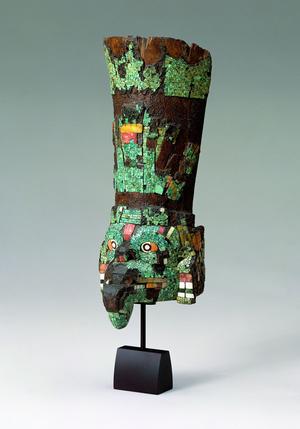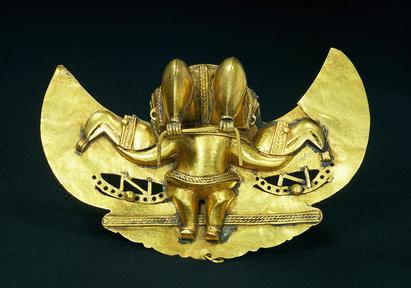
South and Central America
At the beginning of the 1500s Europeans encountered a number of civilizations, which were characterised by technological development, in Mesoamerica (part of Central America) and the Andes.
These empires were quickly subjugated by the Spanish invaders, who established colonial administration and introduced Christianity.
The Spaniards plundered the empires of their abundant gold and silver, which was then transported to Europe. The pre-Spanish (pre-Columbian) cultures are known especially for their architectural ruins and their wealth of archaeological finds.

The dividing up of territories between Spain and Portugal
A papal decree of 1494 divided the newly discovered world between the two great powers of the period of discovery, Spain and Portugal.
At the Treaty of Tordesillas a line of demarcation was drawn a specific distance west from the Cape Verde Islands, which determined the areas of interest of the two countries. In this way the western part of South America was allotted to Spain and the eastern part to Portugal.
Here the Portuguese met an Indian population, whose culture was clearly different to those which the Spanish had come across in the west.
Many of these Indians, who until then had lived in small independent communities, were forcibly incorporated into the European plantations along the Atlantic coast, whilst others were able to preserve their freedom in the forests of the interior.
The scattered Indian population did not provide a sufficient workforce for the sugar plantations and the Portuguese soon began to import slaves from their colonies in Africa.

Ethnographic paintings from the 1600s
It was this society, populated by Portuguese, Indians and Africans, that came under Dutch control in the 1600s.
The Dutch governor general Johan Moritz of Nassau-Siegen brought along scientists and artists to document what they encountered in the new colony.
The painter Albert Eckhout was given the task of producing portraits of the colony’s various peoples, together with depicting the numerous new tropical crops.
On returning to Europe, Johan Moritz presented many of these paintings to his relation, the Danish king Frederik III.
In this way, part of the world’s first professional pictorial documentation of South America – at the same time the first showing people from the tropics painted in their natural surroundings – came to Denmark.
In the exhibition Peoples of the Earth at the National Museum you can encounter archaeological finds from the last millennia before the Europeans came and from the earliest part of the colonial period – together with the famous Eckhout paintings and Indian objects from the region.
More about South and Central America?
Visit the Ethnographic Collections at the National Museum in Copenhagen.
